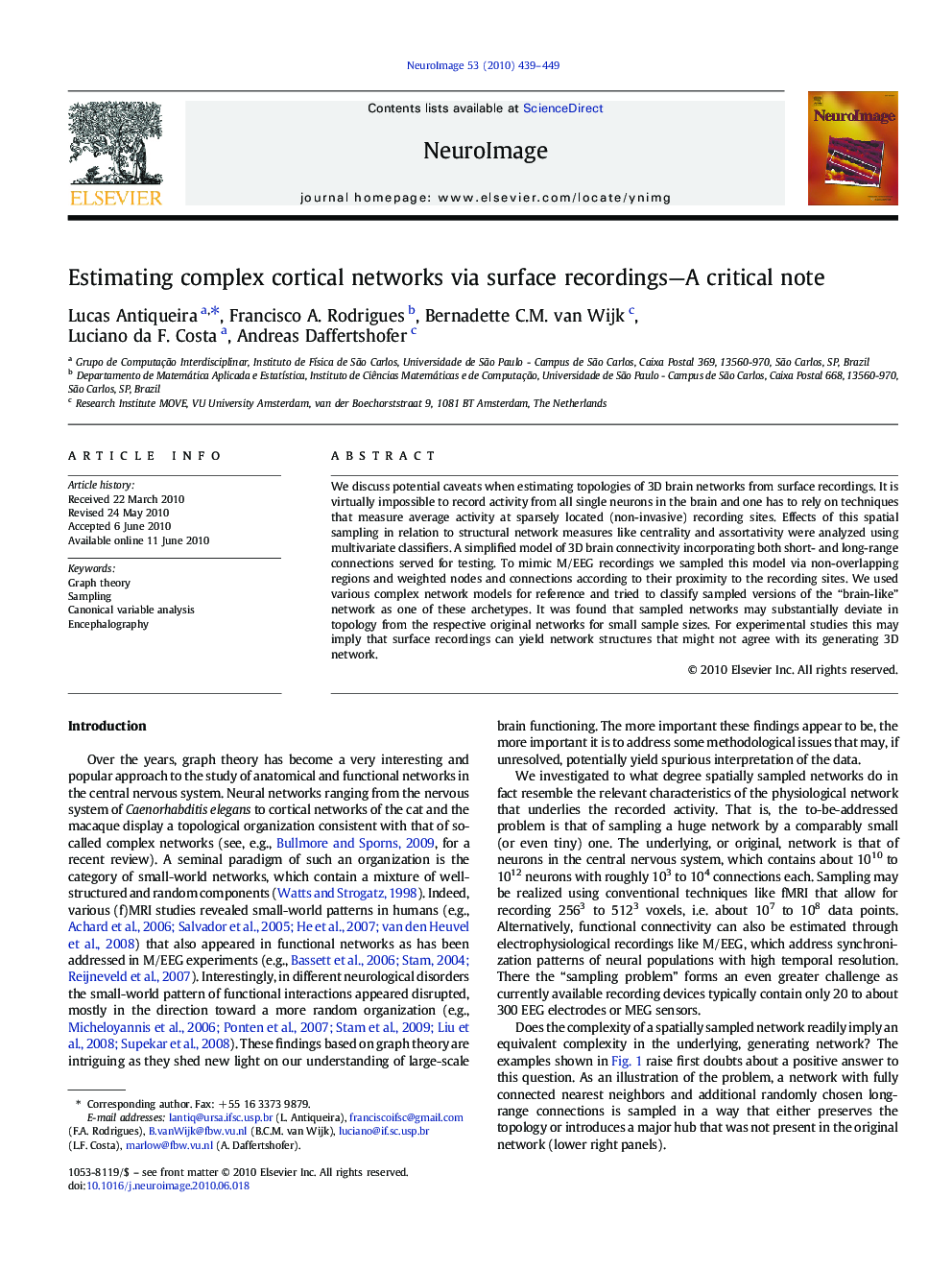| Article ID | Journal | Published Year | Pages | File Type |
|---|---|---|---|---|
| 3072260 | NeuroImage | 2010 | 11 Pages |
We discuss potential caveats when estimating topologies of 3D brain networks from surface recordings. It is virtually impossible to record activity from all single neurons in the brain and one has to rely on techniques that measure average activity at sparsely located (non-invasive) recording sites. Effects of this spatial sampling in relation to structural network measures like centrality and assortativity were analyzed using multivariate classifiers. A simplified model of 3D brain connectivity incorporating both short- and long-range connections served for testing. To mimic M/EEG recordings we sampled this model via non-overlapping regions and weighted nodes and connections according to their proximity to the recording sites. We used various complex network models for reference and tried to classify sampled versions of the “brain-like” network as one of these archetypes. It was found that sampled networks may substantially deviate in topology from the respective original networks for small sample sizes. For experimental studies this may imply that surface recordings can yield network structures that might not agree with its generating 3D network.
Research Highlights► Samples of networks can greatly deviate from the original, underlying structures. ► Topological measures of samples mostly agree with those of random networks. ► Integrating several topological measures can improve network classification.
